Navigating the fast-evolving world of technology requires staying updated with the most relevant programming languages. Knowledge of the best programming languages is crucial for developers, businesses, and tech enthusiasts.
As we move forward into 2024 and beyond, the programming landscape continues to shift, with new languages emerging and established ones reinforcing their importance.
The market share of top programming languages is shown below figure:
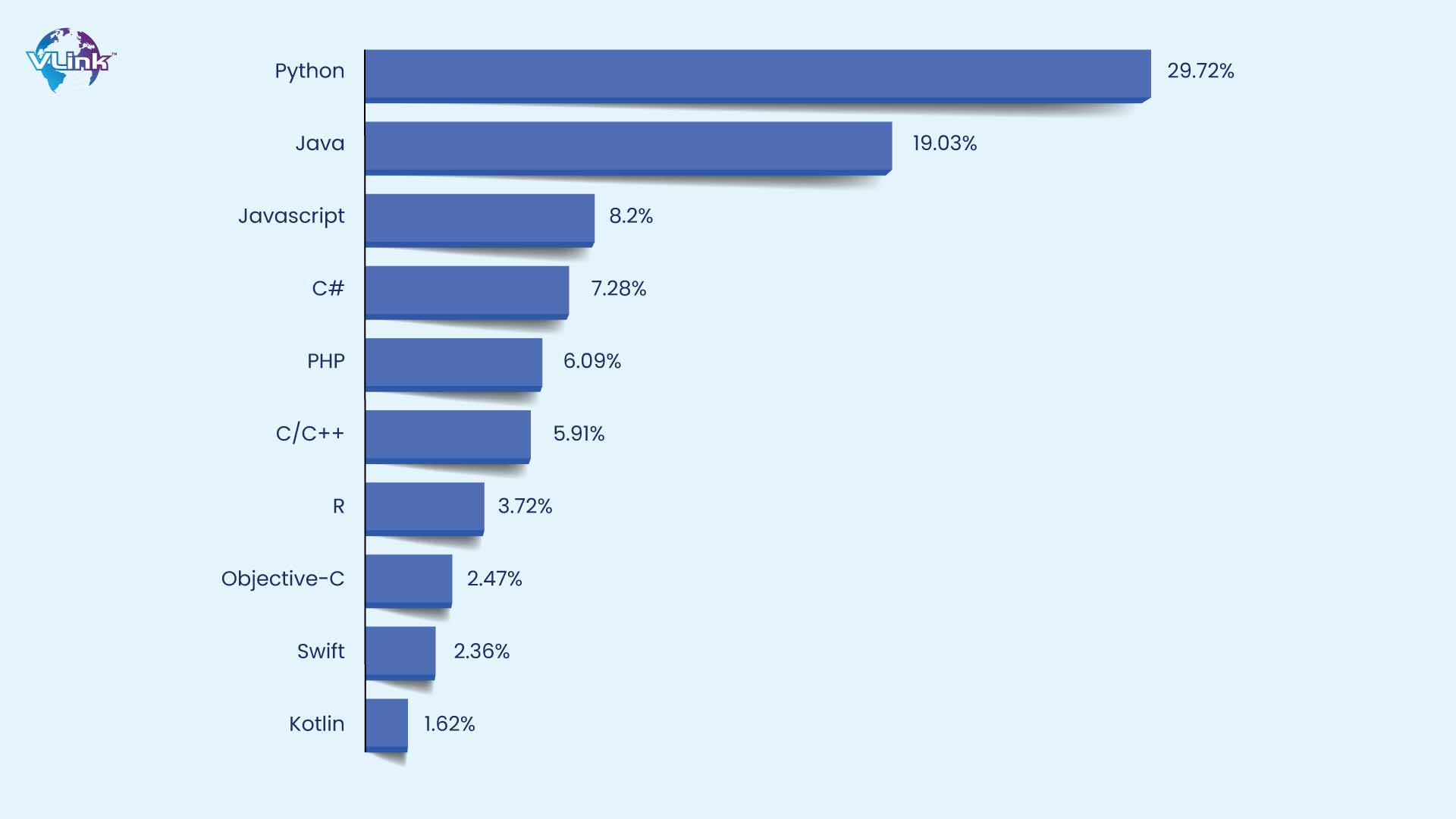
Here's a comprehensive look at the top 20 programming languages that will dominate the industry in the coming years.
What is a Programming Language?
A programming language is a formal language comprising a set of instructions used to produce various kinds of output. It allows developers to communicate instructions to a computer, enabling it to perform specific tasks. These tasks may range from simple calculations to complex operations like software development, data analysis, and system automation.
What are the Best Programming Languages to Learn in 2024 & Beyond
Whether you are a developer or business owner, there’s a chance you may have concerns: “What coding and programming language should I learn or will be best for a particular software development project?” Don’t worry!
Here is a list of top 20 programming languages for 2024 & beyond
- Python
- Java
- JavaScript
- C#
- PHP
- R
- Objective-C
- Swift
- HTML/CSS
- Kotlin
- TypeScript
- SQL
- GO
- Rust
- Ruby
- Dart
- Matlab
- Perl
- Scala
- LUA
#1 - Python
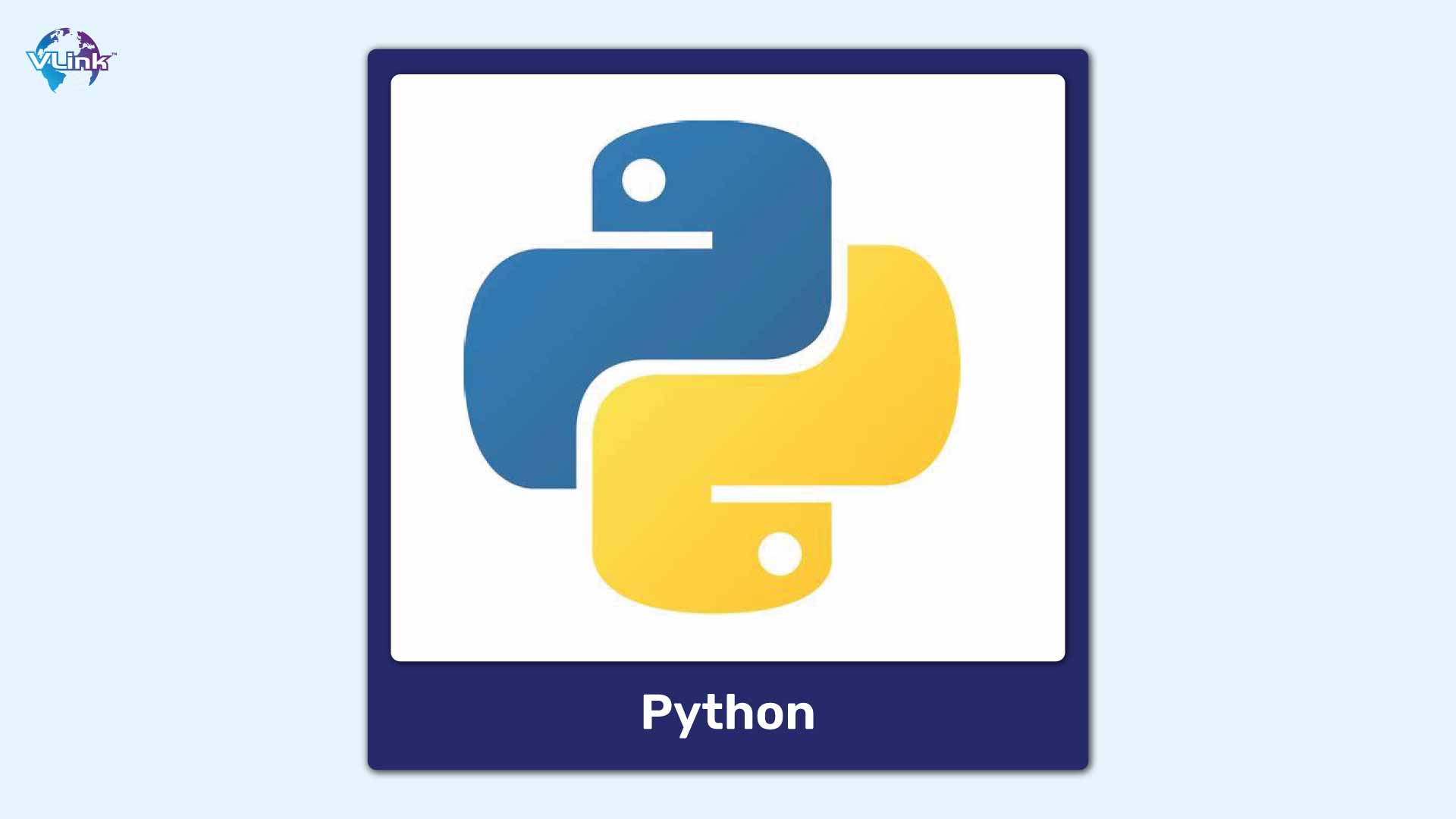
According to the PYPL popularity of programming language, Python is the most popular language with a 29.72% market share.
Why Should You Learn Python Language in 2024 & Beyond?
Python remains a prevalent programming language among both novices and seasoned developers. Thanks to its intuitive syntax and readability, it’s accessible and enjoyable, especially for beginners.
Its extensive ecosystem of most popular libraries in Java and frameworks empowers developers to handle complex tasks with ease. For example, NumPy and pandas have revolutionized data analysis, while TensorFlow and PyTorch are integral to machine learning and AI.
Python's simplicity facilitates rapid prototyping, which is ideal for academic research and production environments alike. Its broad applicability across industries ensures that learning Python in 2024 opens numerous career opportunities, from web development to data analytics and beyond.
What is Python Language Used for?
Here are several use cases of Python Languages:
- Web development
- Data analysis
- Machine learning
- Automation
- Scientific computing
Benefits and Drawbacks of Python
Here are benefits and drawbacks of Python programming language is shown in below table:
Benefits | Drawbacks |
Readable and clean syntax | Performance may be slower than compiled languages |
Extensive standard library | Global interpreter lock (GIL) can limit concurrency |
Broad community support | Not as strong in memory-intensive tasks |
Versatile | Not as suitable for mobile development, computing and game development |
Cross-platform compatibility |
|
Easy to learn and beginner-friendly |
|
If you are planning to invest in a custom Python web application development project, hire a Python developer.
#2 - Java
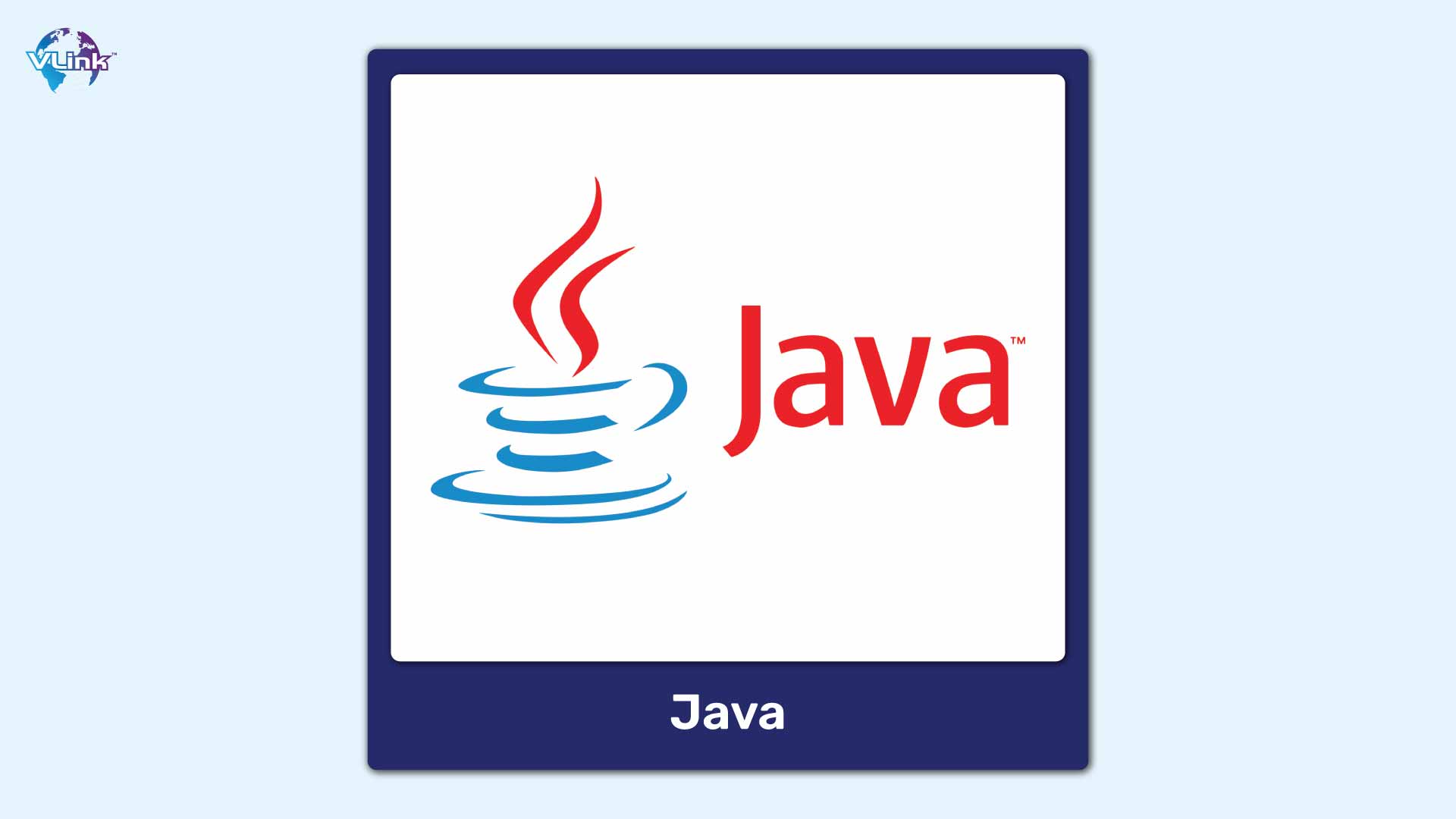
According to the PYPL popularity of programming language, Java is the most popular language with a 19.03% market share.
Why Should You Learn Java Language in 2024 & Beyond?
Java will still be one of the top programming languages in 2024, maintaining its significance in the constantly evolving realm of software development. Because of its object-oriented structure, it’s ideal for intricate architectures and large-scale systems, from minor projects to enterprise-level Android mobile apps.
Other reasons to learn Java in 2024 are the extensive ecosystem and diverse applications. Java has a vast array of libraries, frameworks, and tools that streamline development processes. Frameworks like Spring and Hibernate amplify productivity by addressing enterprise application patterns and persistence needs.
Additionally, Java's performance, reliability, and security render it a preferred option in finance, healthcare, and manufacturing industries, where these attributes are indispensable.
What is Java Language Used for?
Here are several use cases of Java language:
- Enterprise Applications
- Android Development
- Web App Development
- Cloud-Based Applications
- IoT (Internet of Things) Services
- Big Data Technologies
Benefits and Drawbacks of Java
Here are a few of the benefits and drawbacks of Java are shown in the table below:
Benefits | Drawbacks |
Platform Independence | Memory Consumption |
Strong Ecosystem | Steeper Learning Curve |
Object-Oriented Programming | Limited Functional Capabilities |
Multi-Threading Support |
|
Robust Security |
|
If you need a robust, scalable solution for large-scale systems and enterprise applications, hire a Java developer.
#3 - JavaScript
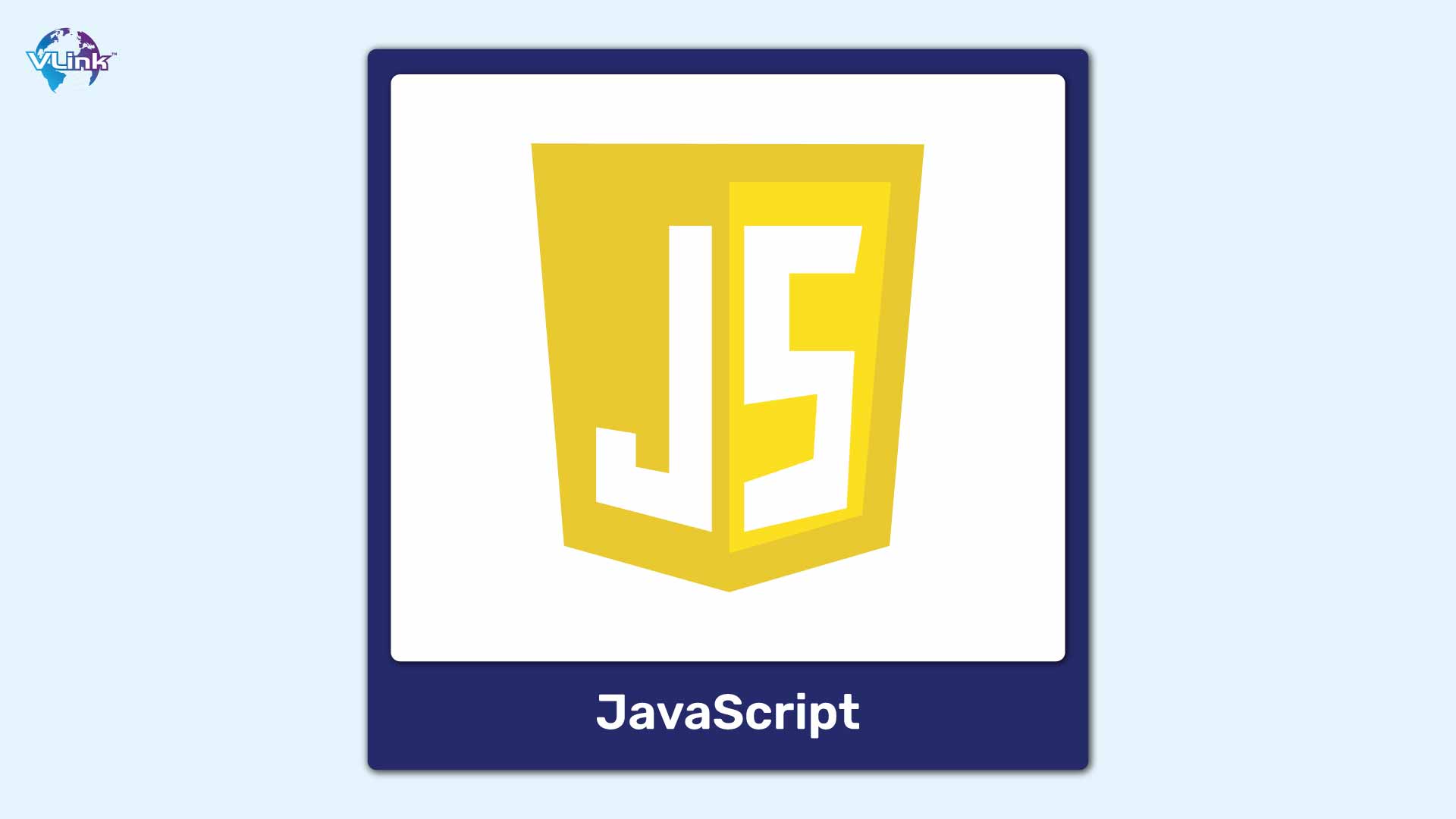
According to the PYPL popularity of programming languages, JavaScript is the most popular language, with an 8.2% market share.
Why Should You Learn JavaScript Language in 2024 & Beyond?
JavaScript stands out as the backbone of web development. It is celebrated for its adaptability and widespread usage and offers a plethora of excellent courses.
One compelling reason to delve into JS language is its extensive ecosystem and strong community backing. Leveraging JavaScript frameworks and libraries like React, Angular, and Vue.js, developers can swiftly prototype and deploy intricate applications and projects.
In addition, the emergence of Node.js has broadened JavaScript's horizons to encompass server-side programming, facilitating full-stack development with a unified language. This streamlining diminishes the necessity for mastering multiple languages in building full-stack applications.
JavaScript's continuous progression guarantees its enduring relevance in modern web standards and methodologies.
What is JavaScript Language Used for?
Here are several use cases of JavaScript language:
- Web Development
- Front-End Frameworks and Libraries
- Server-Side Development
- Mobile App Development
- Game Development
- Machine Learning and AI
Benefits and Drawbacks of JavaScript
Here are a few of the benefits and drawbacks of JavaScript are shown in the table below:
Benefits | Drawbacks |
Versatility | Browser Compatibility Issues |
Huge Ecosystem and Community Support | Security Vulnerabilities |
Continoual Evolution and Modern Standards |
|
#4 - C#
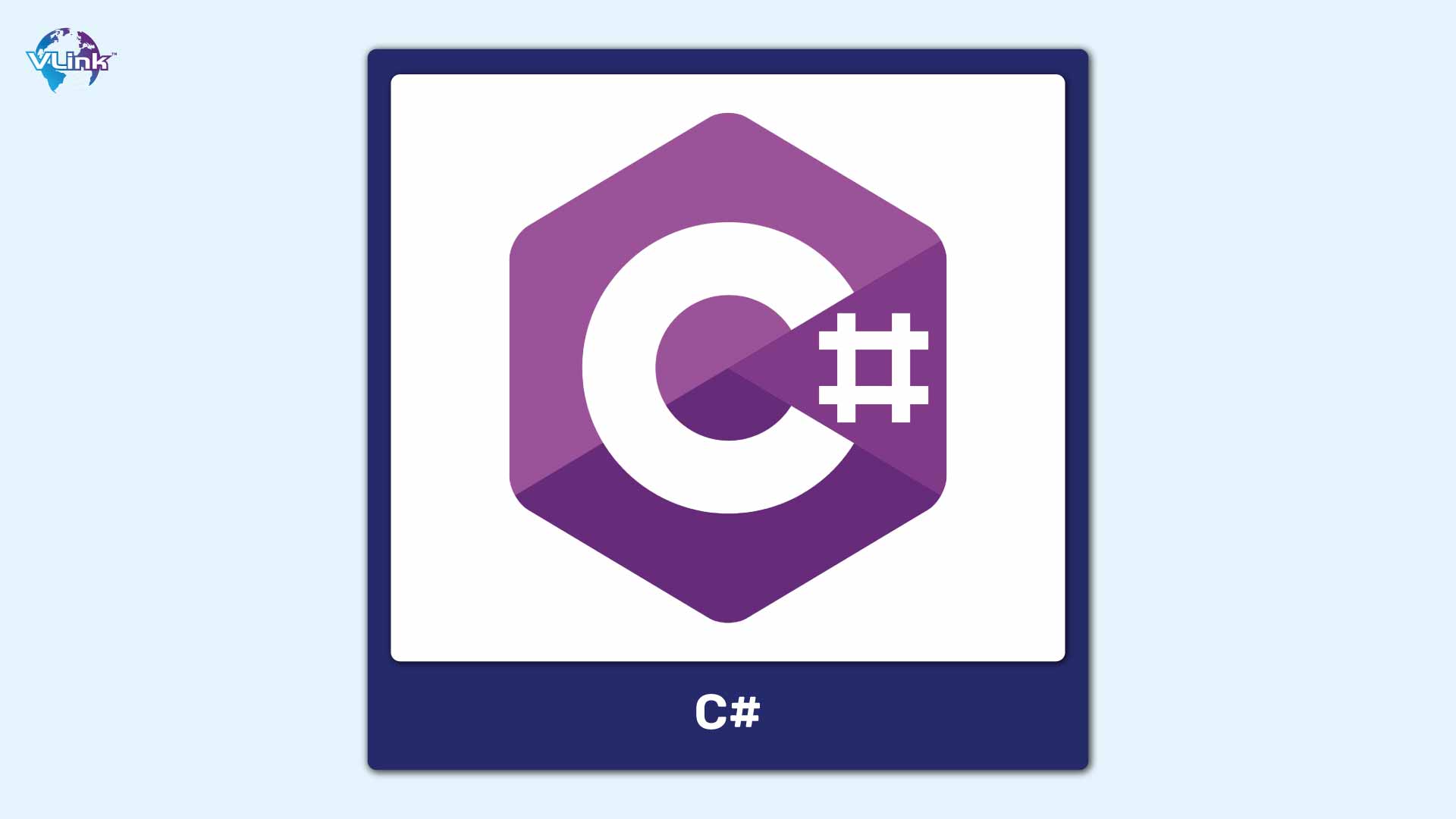
According to the PYPL popularity of programming language, C# is the most popular language with a 7.28% market share.
Why Should You Learn C# Language in 2024 & Beyond?
In 2024, C# remains a cutting-edge, object-oriented programming language. It’s used to create robust and secure applications across multiple platforms, including Windows, web, and mobile.
With the advancement of the .NET ecosystem, primarily through .NET Core, C# and .Net has broadened its horizons. Now, developers can harness its capabilities to construct applications compatible with Linux and macOS, in addition to Windows.
Versatility, robust typing, automatic memory management, and extensive library support make it a popular programming language.
In addition, the seamless integration of C# with the dynamic .NET ecosystem is a compelling motivation to master the language. This integration grants access to a wide array of libraries and trending web frameworks for app development, such as ASP.NET for web development, Xamarin for mobile app creation, and Entity Framework for efficient data access.
These resources not only accelerate the development cycle but also enrich the functionality and efficiency of C# applications. Thus, developers can concentrate on writing top-level code without being burdened by the intricacies of underlying platforms.
What is C# Language Used for?
Here are several use cases of C# language:
- Desktop Applications
- Web Applications
- Game Development
- Mobile Applications
- Cloud-Based Services
- Enterprise Applications
Benefits and Drawbacks of C#
Here is a table outlining the benefits and drawbacks of C#:
Benefits | Drawbacks |
Rich Standard Library | Requires the .NET Framework or Mono |
Object-Oriented Programming Support | Limited Cross-Platform Support |
Memory Management with Garbage Collector | Steeper Learning Curve |
Excellent Integration with Microsoft Technologies |
|
#5 - PHP
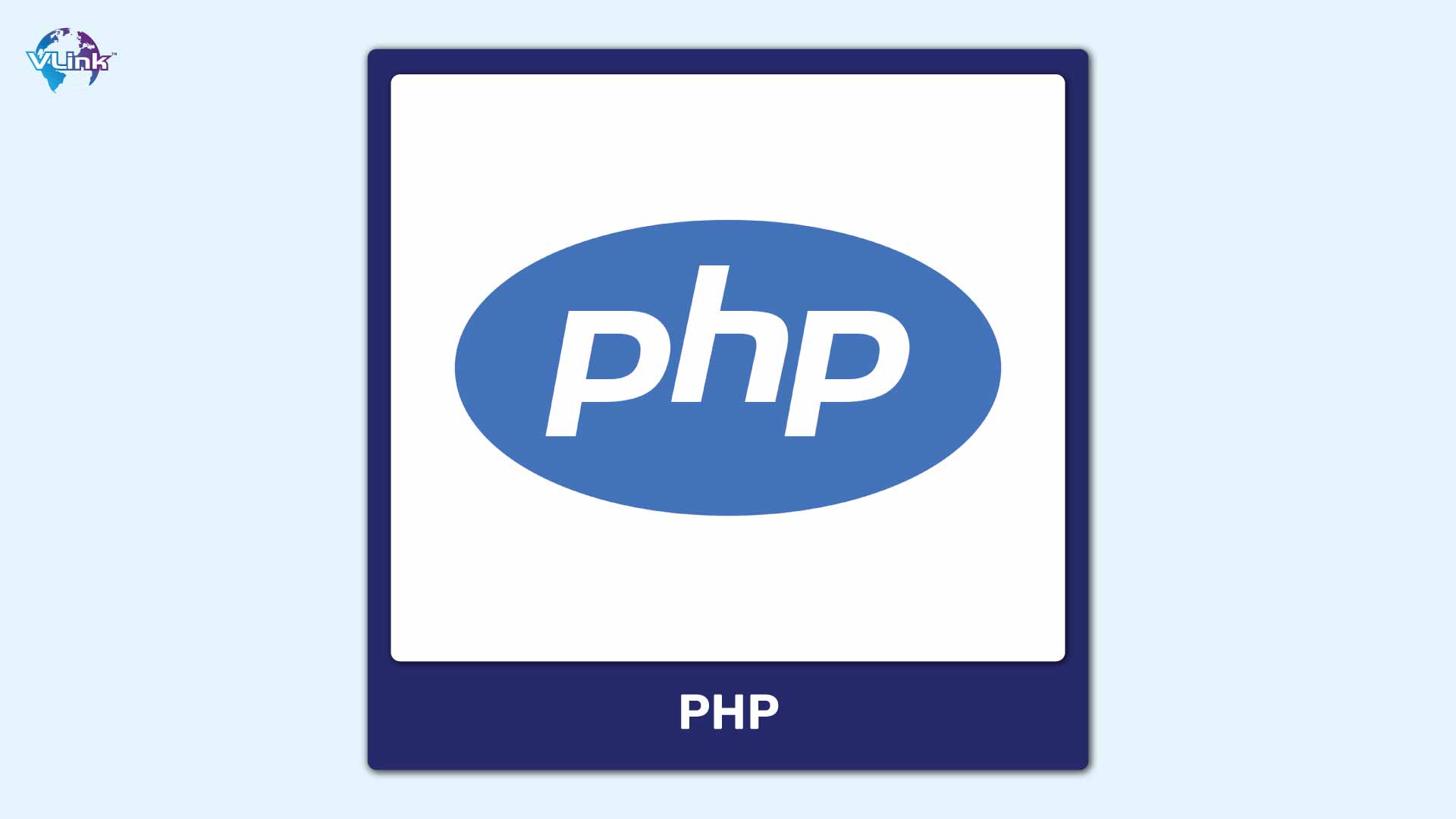
According to the PYPL popularity of programming language, PHP is the most popular language with a 6.09% market share.
Why Should You Learn PHP Language in 2024 & Beyond?
PHP is one of the primary scripting languages of the web, still highly prevalent today, with over 75% of websites using it.
PHP's ease of use, flexibility, and vast ecosystem of frameworks and tools make it an attractive choice for web developers who want to build dynamic and interactive websites.
One of the best reasons to learn PHP in 2024 is its ubiquity in web hosting environments and content management systems (CMS).
With widespread support across hosting services, deploying PHP-based applications and projects is often straightforward, lowering the barrier to entry for web development.
In addition, PHP plays a crucial role in popular CMS platforms like WordPress, Drupal, and Joomla. It enables developers to create powerful websites with extensive functionalities, leveraging the platform's themes and plugins.
Thanks to the active community, PHP continues to evolve. With the latest release, PHP 8 offers significant performance improvements and new features like JIT (Just-In-Time) compilation.
These enhancements not only boost the execution speed of PHP applications but also enhance the language's capability to handle complex web development tasks. It offers extensive resources, libraries, and frameworks such as Laravel, Symfony, and CodeIgniter.
These PHP frameworks simplify the development process by offering structured, reusable code for common tasks, accelerating development cycles, and enhancing application security and scalability.
What is PHP Language Used for?
- Dynamic Website Development
- Content Management Systems (CMS)
- E-commerce Platforms
- Web Application Development
- API Development
- Server-Side Scripting
Benefits and Drawbacks of PHP
Here is a table outlining the benefits and drawbacks of PHP:
Benefits | Drawbacks |
Simple and straightforward syntax | Slow performance for high intensive applications |
Efficient and fast for web development tasks |
|
Open-Source and free to use |
|
Large community |
|
Built-in security feature |
|
#6 - R
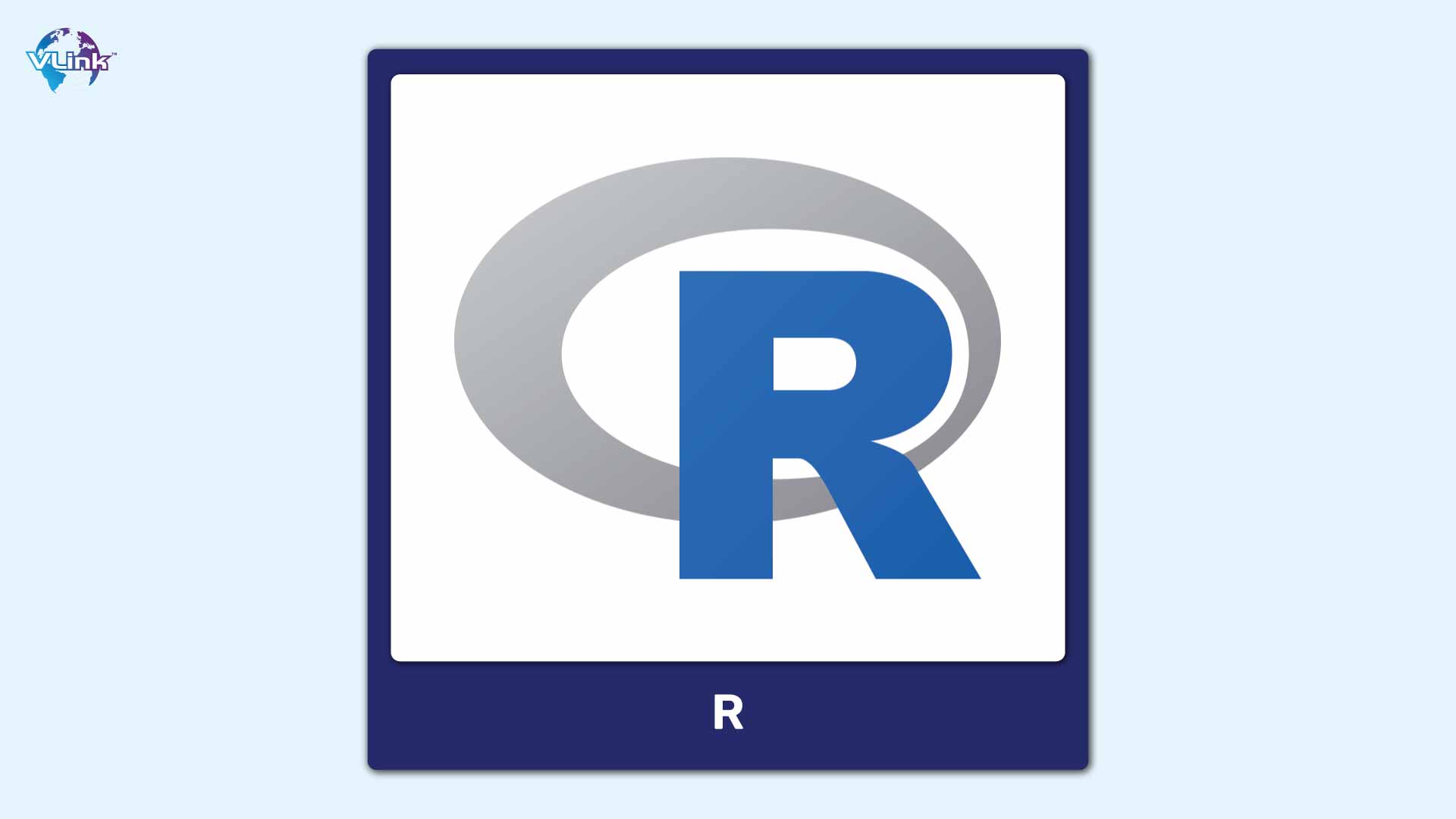
According to the PYPL popularity of programming language, R is the most popular language with a 3.72% market share.
Why Should You Learn R Language in 2024 & Beyond?
R has become one of the most popular languages for statisticians, data scientists, and researchers worldwide. One of the biggest reasons to learn R in 2024 is its vast ecosystem of packages, housed in the Comprehensive R Archive Network (CRAN).
It provides tools for virtually every statistical technique and data visualization method imaginable. This extensive library support allows complex data analyses and the creation of high-quality graphs with minimal code.
Another major strength of R is its community-driven nature, with contributions from statisticians and data scientists worldwide. This collaborative approach keeps R at the forefront of statistical methods and data science practices.
Additionally, R's integration with various data sources and its capability to interface with other languages and technologies (such as SQL databases, Hadoop, and even Python through libraries like reticulate) make it an indispensable tool in any data scientist's toolkit.
What is R Language Used for?
- Statistical Analysis and Modeling
- Data Visualization
- Data Manipulation and Cleaning
- Machine Learning and AI Development
- Bioinformatics and Computational Biology
- Reproducible Research
Benefits and Drawbacks of R
Here is a table outlining the benefits and drawbacks of R:
Benefits | Drawbacks |
Rich library of packages for advanced statistical analysis | Can be slow with large datasets |
Powerful tools for data visualization | Steeper learning curve |
Strong, active community | Memory management can be challenging for very large datasets |
Highly flexible and extensible for data manipulation and analysis |
|
#7 - Objective-C
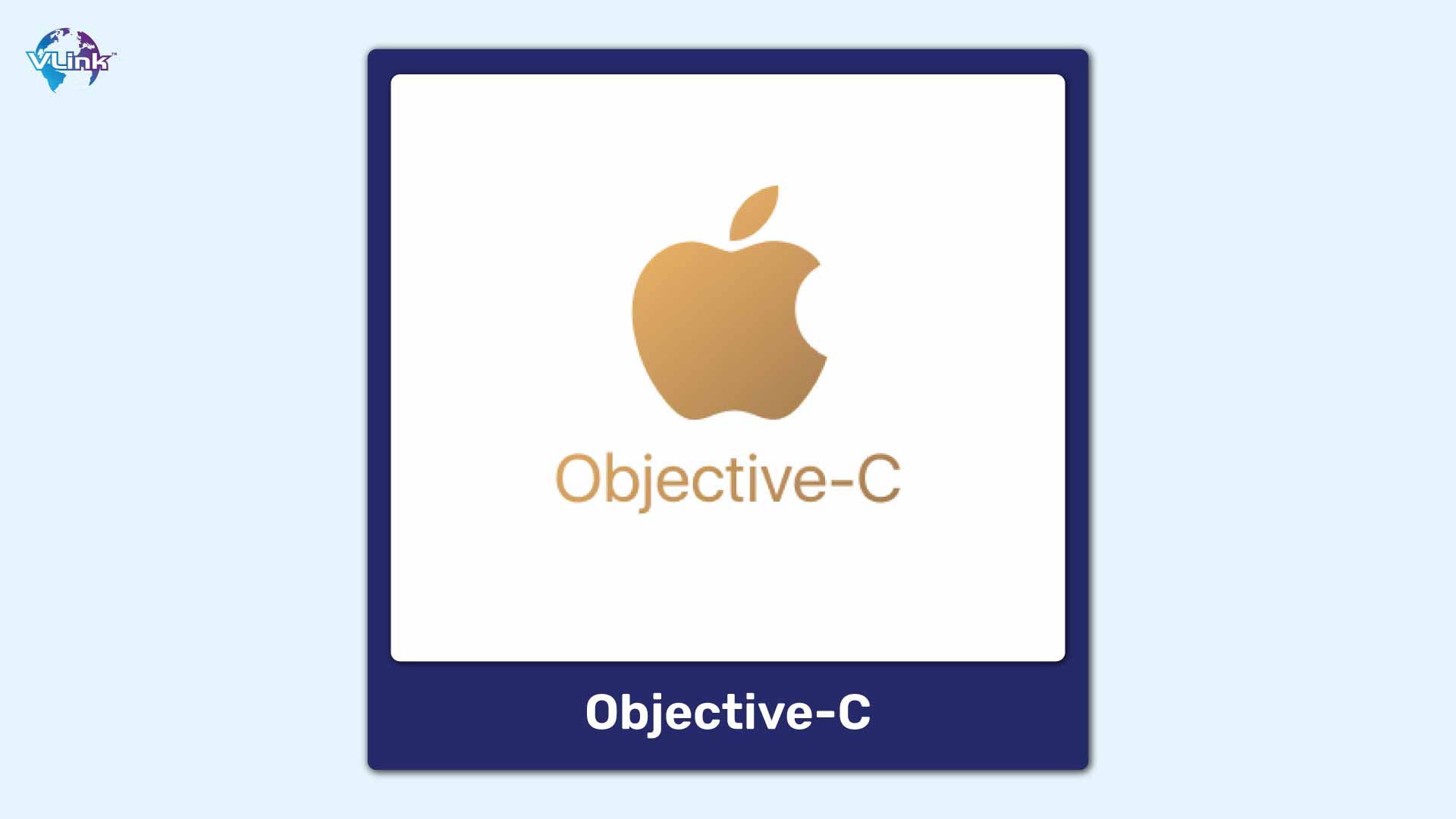
According to the PYPL popularity of programming language, Objective-C is the most popular language with a 2.47% market share.
Why Should You Learn Objective-C Language in 2024 & Beyond?
Learning Objective-C in 2024 is essential for maintaining and updating legacy iOS/macOS applications, as many older projects are still written in it. Its seamless interoperability with Swift allows for practical mixed-language projects, leveraging existing Objective-C libraries and frameworks.
Understanding Objective-C offers more profound insights into Apple's development ecosystem and API design. The demand for Objective-C skills remains in the job market, especially for legacy code maintenance, providing valuable professional opportunities.
Its maturity and stability make it a reliable choice for performance-critical applications, ensuring its continued relevance in the industry.
What is Objective-C Language Used for?
- iOS and macOS Application Development
- Framework and Library Development
- System and Embedded Programming
- Professional and Legacy Codebase Maintenance
Benefits and Drawbacks of Objective-C
Here is a table outlining the benefits and drawbacks of Objective C:
Benefits | Drawbacks |
Mature and stable | Less Modern |
Seamless integration with C/C++ | Steeper Learning Curve |
Rich ecosystem | Verbose syntax |
Dynamic runtime |
|
Legacy codebase maintenance |
|
#8 - Swift
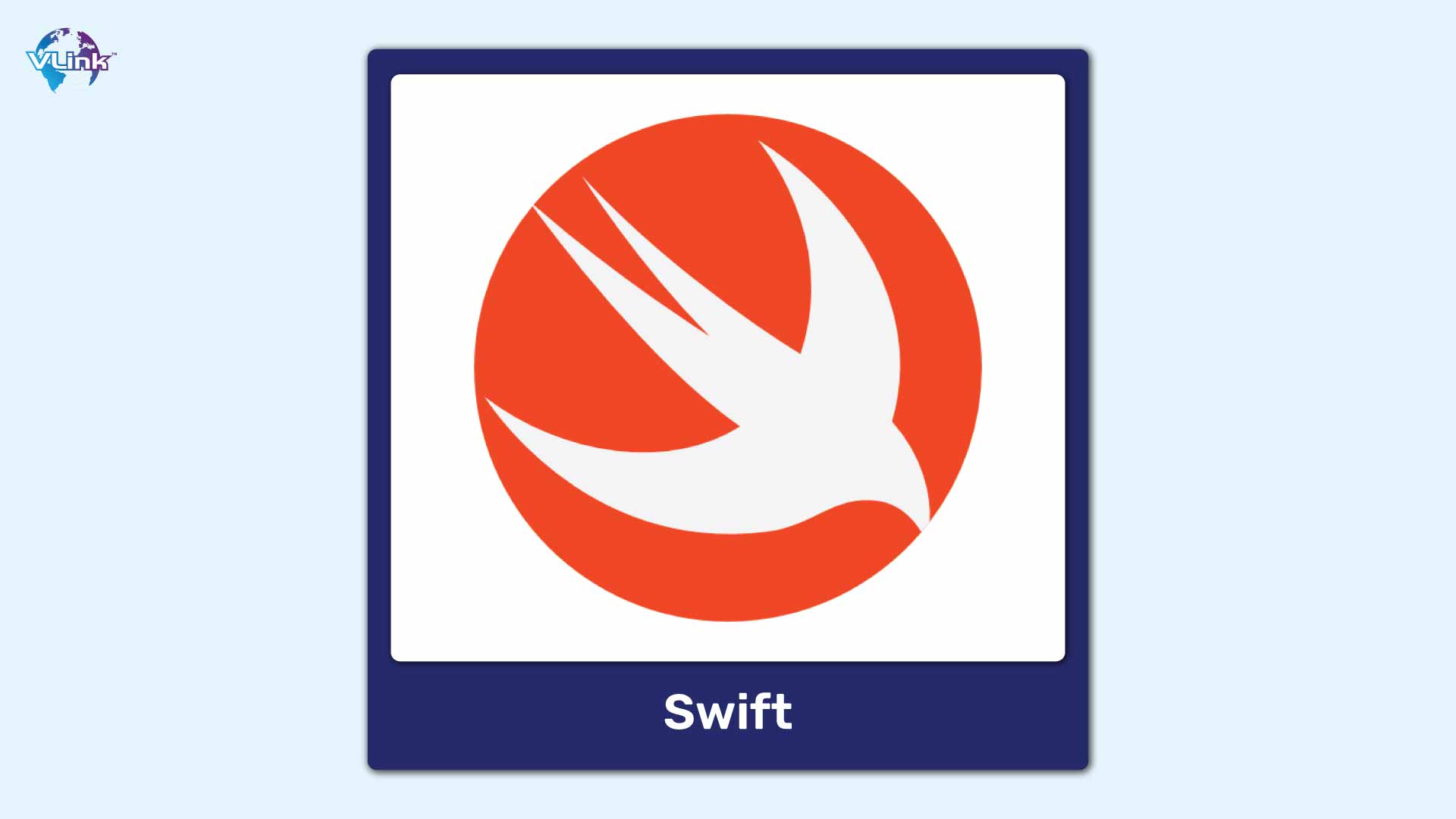
According to the PYPL popularity of programming language, Swift is the most popular language with a 2.36% market share.
Why Should You Learn Swift Language in 2024 & Beyond?
If you want to build innovative mobile and desktop apps in the Apple ecosystem, it’s essential to learn Swift in 2024 and beyond. Thanks to its powerful and user-friendly nature, Swift is an excellent choice for both beginners and experienced developers.
With a clean and expressive syntax, Swift emphasizes both safety and performance. One of the top reasons to learn Swift in 2024 is its robust performance and safety features.
Swift integrates seamlessly with the Apple ecosystem, giving developers access to powerful APIs and frameworks like SwiftUI. This framework uses declarative syntax to build user interfaces across all Apple platforms.
With Swift, you can leverage Apple's latest technologies, such as ARKit for augmented reality and CoreML for machine learning.
Swift's development is community-driven, with its source code available as open-source. It fosters a vibrant community of developers who contribute to the language's evolution, ensuring it continues to grow and adapt to new challenges.
What is Swift Language Used for?
- iOS Applications
- macOS Desktop Applications
- watchOS Applications
- tvOS Application
- SwiftUI for Cross-Platform Development
- Server-Side Development
Benefits and Drawbacks of Swift
Here is a table outlining the benefits and drawbacks of Swift:
Benefits | Drawbacks |
Cleaner and more concise syntax | Smaller Ecosystem |
Safety features | Interoperability with Objective-C can be complex |
Growing popularity and community |
|
Strong type system |
|
#9 - Kotlin
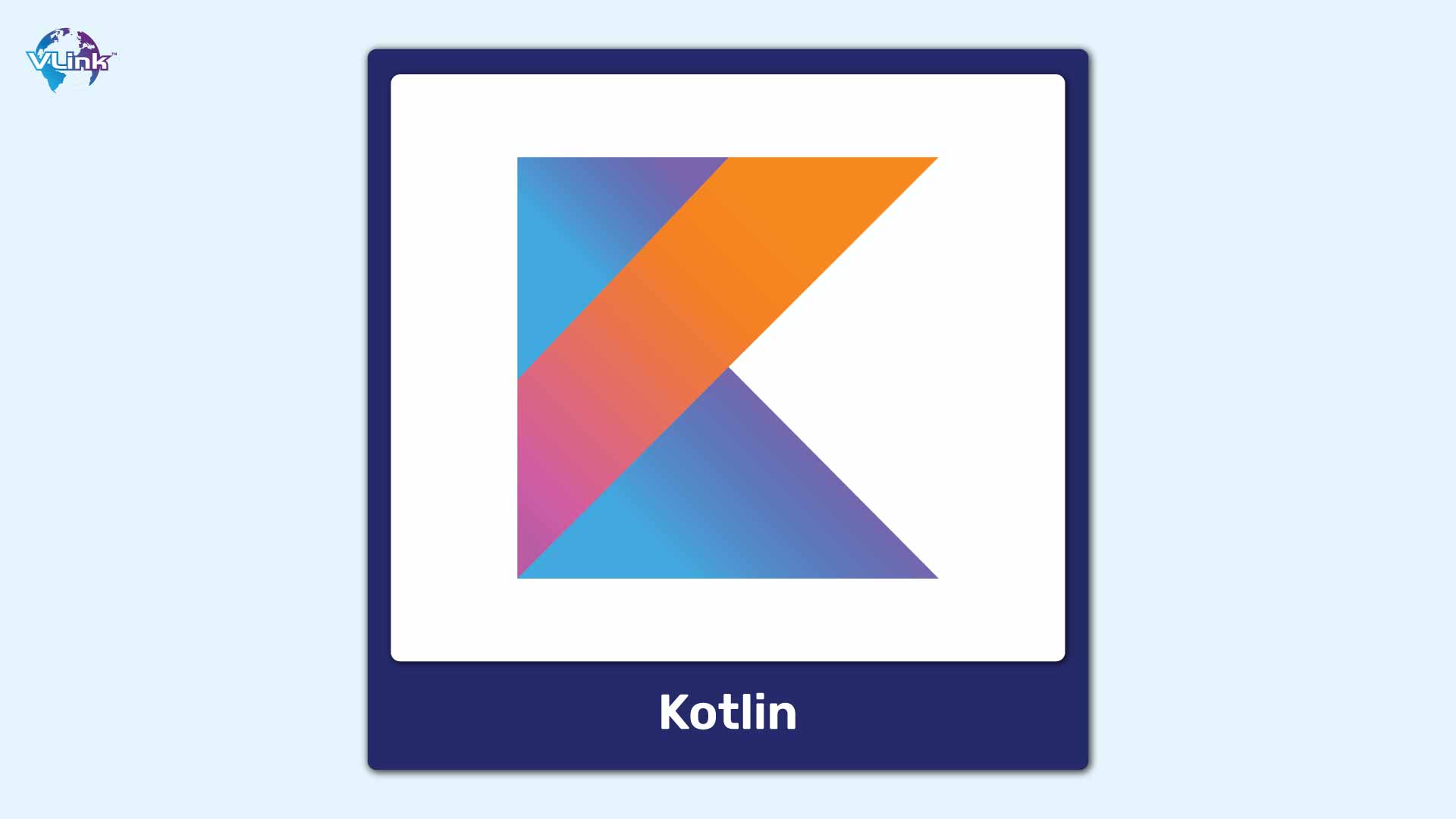
According to the PYPL popularity of programming language, Kotlin is the most popular language with a 1.62% market share.
Why Should You Learn Kotlin Language in 2024 & Beyond?
Kotlin emerges as a concise, expressive, and type-safe alternative to the well-established Java, seamlessly blending functional and object-oriented programming paradigms.
Kotlin's null safety feature stands out. It is engineered to eradicate null pointer exceptions by integrating nullability into the type of system. Along with its concise syntax, extension functions, and coroutines for asynchronous programming, it significantly amplifies developer productivity and application resilience.
Additionally, Kotlin's compatibility with the Java ecosystem enables the utilization of existing Java libraries and frameworks.
The language's support for multiplatform development is commendable. It enables code sharing across JVM, JavaScript, and native binaries, reducing development time and effort for cross-platform applications. It also aligns well with Kotlin's expressive syntax and safety features, making it a forward-looking language in tune with the future of web and mobile app development.
What is Kotlin Language Used for?
- Android Development
- Backend Development
- Multiplatform Projects
- Data Science and Machine Learning
- Web Development
- Desktop Applications
Benefits and Drawbacks of Kotlin
Here is a table outlining the benefits and drawbacks of Kotlin:
Benefits | Drawbacks |
Concise and expressive syntax | Limited adoption outside of android |
Seamless interoperability with Java | Smaller community and resources |
Coroutines for asynchronous programming |
|
Modern language features |
|
#10 - HTML/CSS
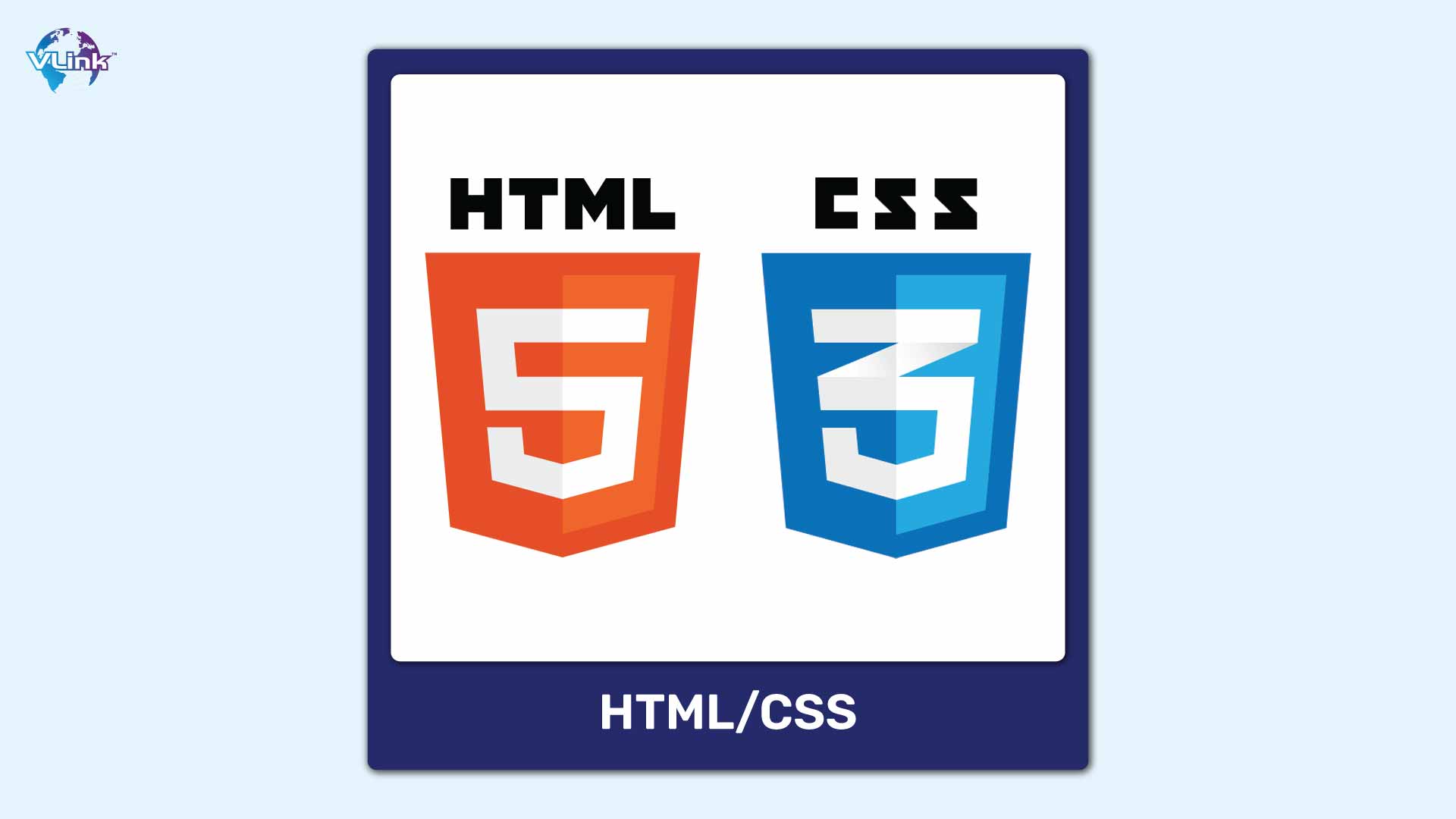
Why Should You Learn HTML/CSS Language in 2024 & Beyond?
Learning HTML/CSS in 2024 remains crucial for web development due to its foundational role in creating visually appealing and responsive websites. Despite advancements in front-end technologies, HTML/CSS serves as the backbone of web design, ensuring cross-browser compatibility and search engine optimization.
Their simplicity makes them accessible to beginners, while their versatility allows for the creation of diverse web experiences. As the demand for web development continues to rise, mastering HTML/CSS opens doors to a wide range of opportunities in front-end development. User interface design, and digital marketing, making them indispensable skills in the evolving landscape of technology.
What is HTML/CSS Language Used for?
- Web Page Structure
- Frontend Web Development
- Web Application Styling
- Responsive Design
- Prototyping and Wireframing
Benefits and Drawbacks of HTML/CSS
Here is a table outlining the benefits and drawbacks of HTML/CSS:
Benefits | Drawbacks |
Easy to learn and use | Maintenance challenges |
Versatile | Lack of interactivity |
Cost-effective development | Limited styling capabilities |
Vast community support and resources |
|
#11 - TypeScript
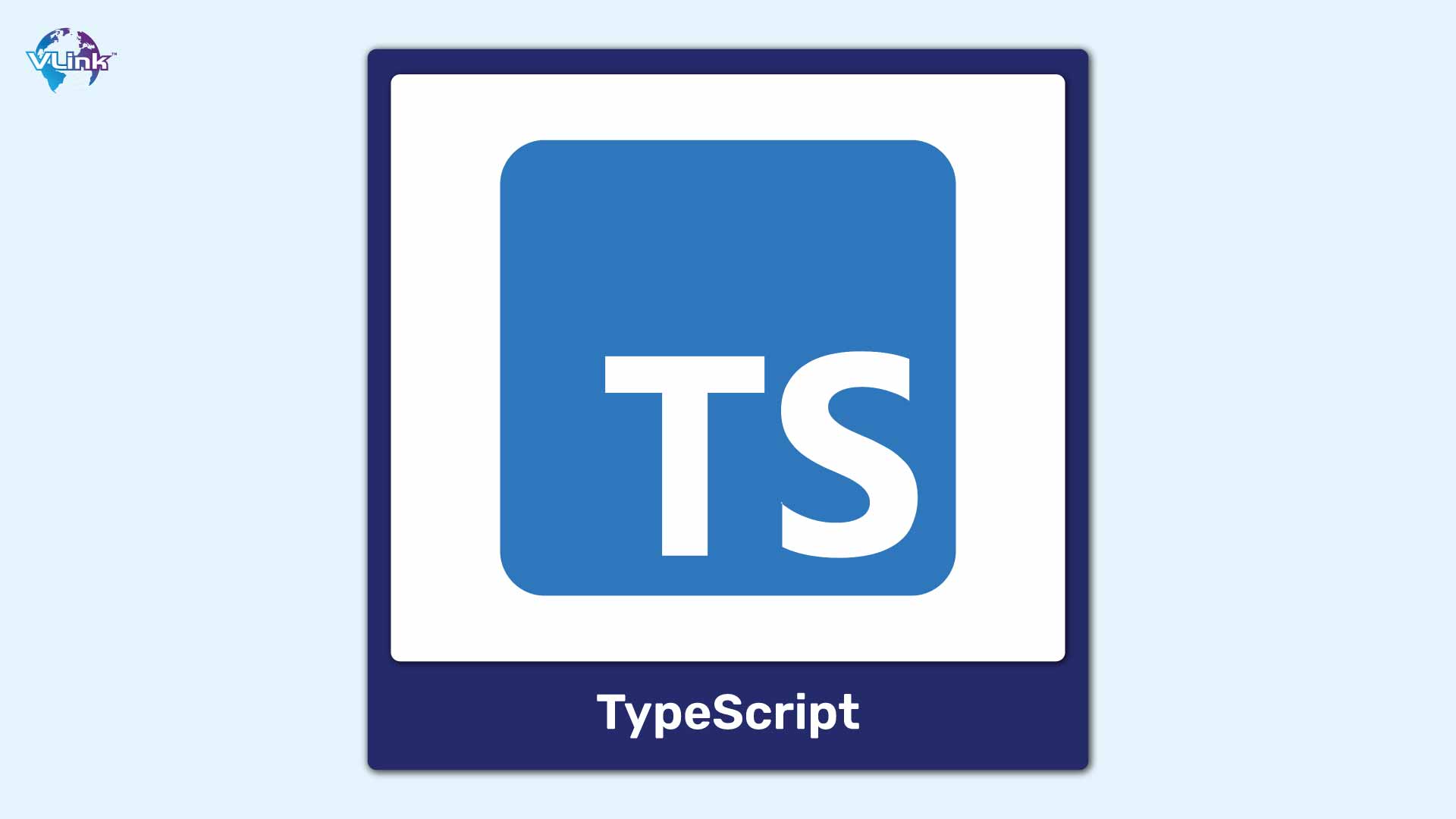
According to the PYPL popularity of programming language, TypeScript is the most popular language with a 3.0% market share.
Why Should You Learn TypeScript Language in 2024 & Beyond?
Developed by Microsoft, TypeScript extends JavaScript with static typing, providing developers with the ability to define variable types explicitly. It not only reduces debugging time but also elevates code quality and predictability.
For teams working on large or intricate projects, TypeScript offers a scaffolding that promotes consistency and comprehension throughout the codebase.
In addition, TypeScript seamlessly integrates with JavaScript, allowing for incremental adoption without the need for a complete project overhaul. This gradual approach enables developers to reap its benefits with minimal disruption.
Overall, TypeScript's compatibility with JavaScript libraries and frameworks and robust support from major development environments ensure a seamless transition and a productive development journey.
In 2024, mastering TypeScript emerges as a strategic career move, given its increasing popularity among front-end and full-stack developers. Its utilization in prominent projects and frameworks like Angular, React (with TypeScript), and Vue.js further solidifies its importance in the developer community.
What is TypeScript Language Used for?
- Large-scale Applications
- Front-End Frameworks
- Full-Stack Development
- Enterprise-Level Projects
- Cross-Platform Mobile and Web Apps
- Game Development
Benefits and Drawbacks of TypeScript
Here is a table outlining the benefits and drawbacks of TypeScript:
Benefits | Drawbacks |
Strong typing | Compilation overhead |
Improved code maintainability | Runtime overhead |
Enhanced IDE support | Migration challenges |
ESNext features support |
|
#12 - SQL
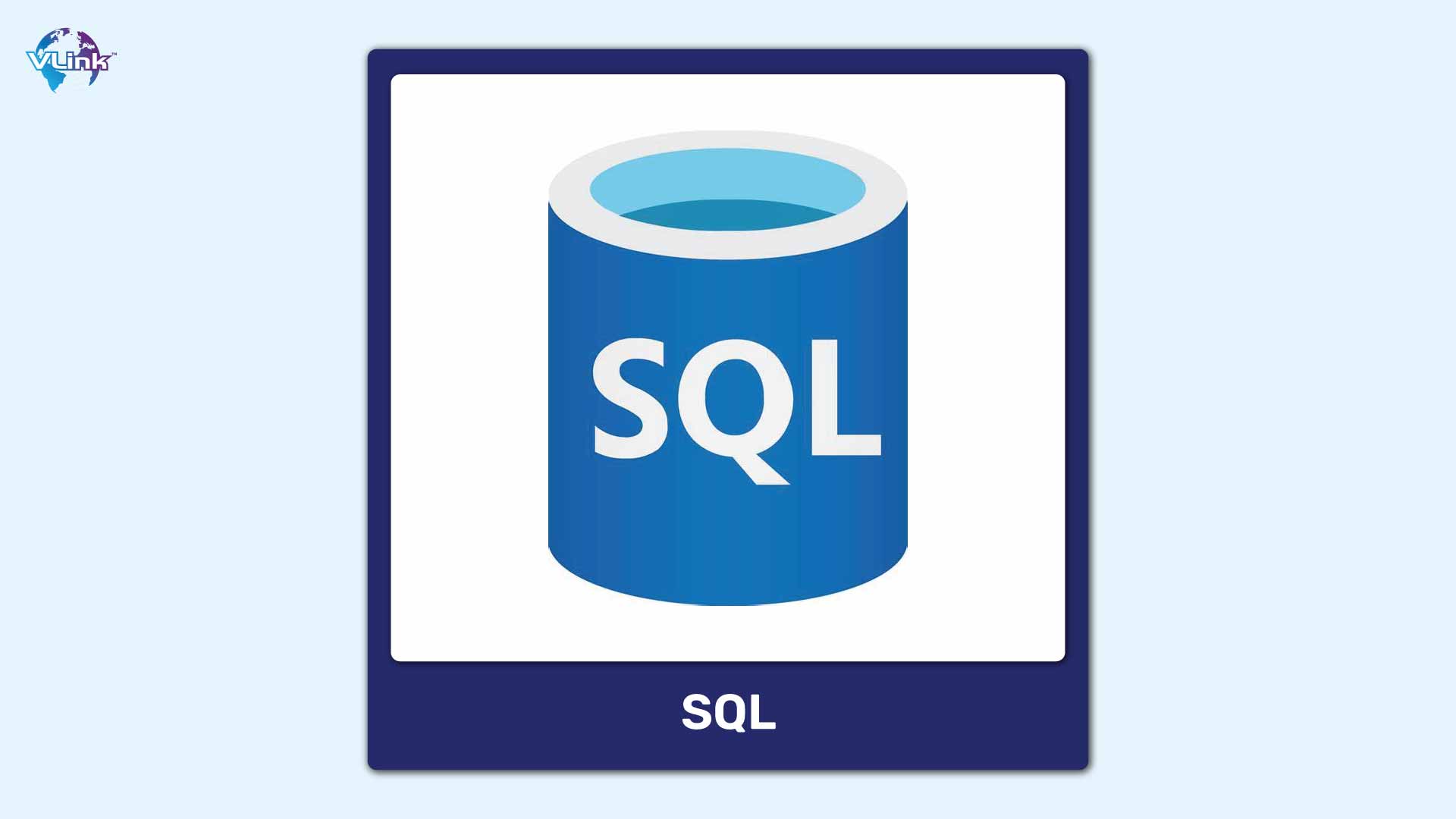
Why Should You Learn SQL Language in 2024 & Beyond?
Learning SQL in 2024 and beyond remains essential for managing and querying relational databases. It ensures data integrity, standardization, and ease of querying, offering robust security features and performance optimization techniques.
SQL's widespread adoption and compatibility make it indispensable for data professionals across various industries, ensuring job market relevance.
What is SQL Language Used for?
- Data Querying
- Data Manipulation
- Database Management
- Database Analysis
- Data Integration
- Transactional Control
Benefits and Drawbacks of SQL
Here is a table outlining the benefits and drawbacks of SQL:
Benefits | Drawbacks |
Data integrity | Lack of version control |
Standarization | Vendor Lock-In |
Ease of querying | Limited data manipulation |
Security features | Scalability challenges |
Performance optimization |
|
#13 - GO
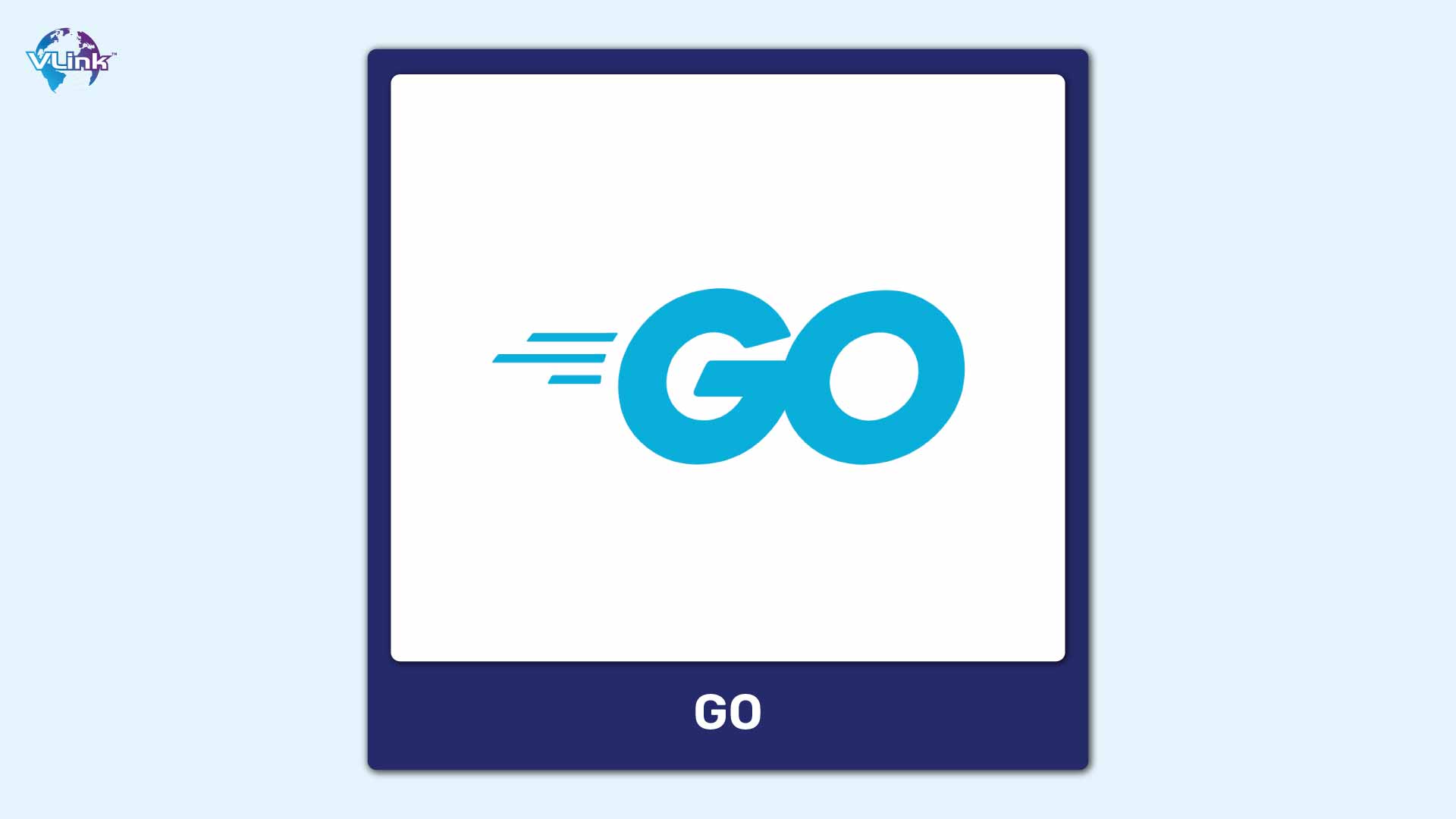
According to the PYPL popularity of programming language, GO is the most popular language with a 2.25% market share.
Why Should You Learn GO Language in 2024 & Beyond?
In 2024, Golang will be a top programming language for those interested in cloud computing and microservices. Developed by Google for large-scale software development, Go blends simplicity, efficiency, and concurrency in a statically typed language. Its design emphasizes usability, high performance, and resilience, making it ideal for distributed systems and scalable web apps.
Web development with GO language is the best decision if you want scalable and efficient web applications. Go's concurrency model excels in creating high-performance network servers and real-time data processing. Its standard library is extensive, covering tasks like HTTP server implementation and database interaction, fostering rapid development with minimal code.
With a thriving ecosystem backed by a vibrant community and corporate support, Go offers abundant resources for web, microservices, and cloud-native development.
What is GO Language Used for?
- Cloud Services and Infrastructure
- Microservices Architecture
- Command-Line Tools
- Web Servers and APIs
- Network Programming
- Data Processing
Benefits and Drawbacks of GO
Here is a table outlining the benefits and drawbacks of GO:
Benefits | Drawbacks |
Simplicity and readability | Dependency management |
Concurrency support | Error handling complexity |
Fast compilation and execution | Young ecosystem |
Static typing and safety |
|
Scalability and deployment |
|
#14 - Rust
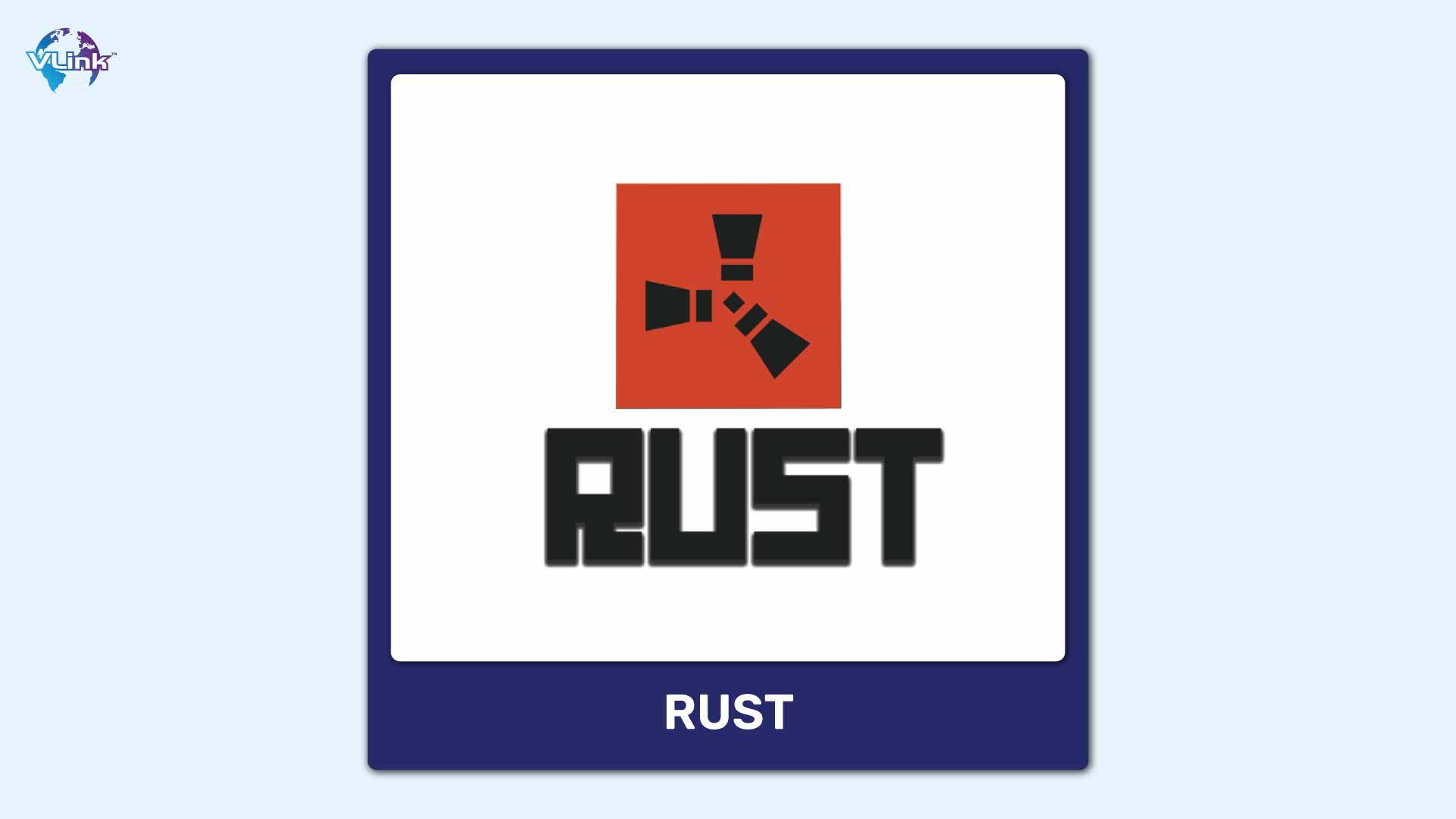
According to the PYPL popularity of programming language, Rust is the most popular language with a 2.5% market share.
Why Should You Learn Rust Language in 2024 & Beyond?
Learning Rust in 2024 is essential for its unique blend of memory safety, performance, and concurrency. As the demand for secure and efficient systems programming grows, Rust's capabilities make it indispensable for developing robust and reliable software.
What is Rust Language Used for?
- Systems Programming
- Web Assembly
- Embedded Systems
- Networking and Concurrency
- Game Development
- Cross-platform Development
Benefits and Drawbacks of Rust
Here is a table outlining the benefits and drawbacks of Rust:
Benefits | Drawbacks |
Memory safety | Error messages complexity |
Concurrency and parallelism | Limited ecosystem |
High performance | Memory management overhead |
Active and welcoming community | Steeper learning curve |
Security and reliability |
|
#15 - Ruby
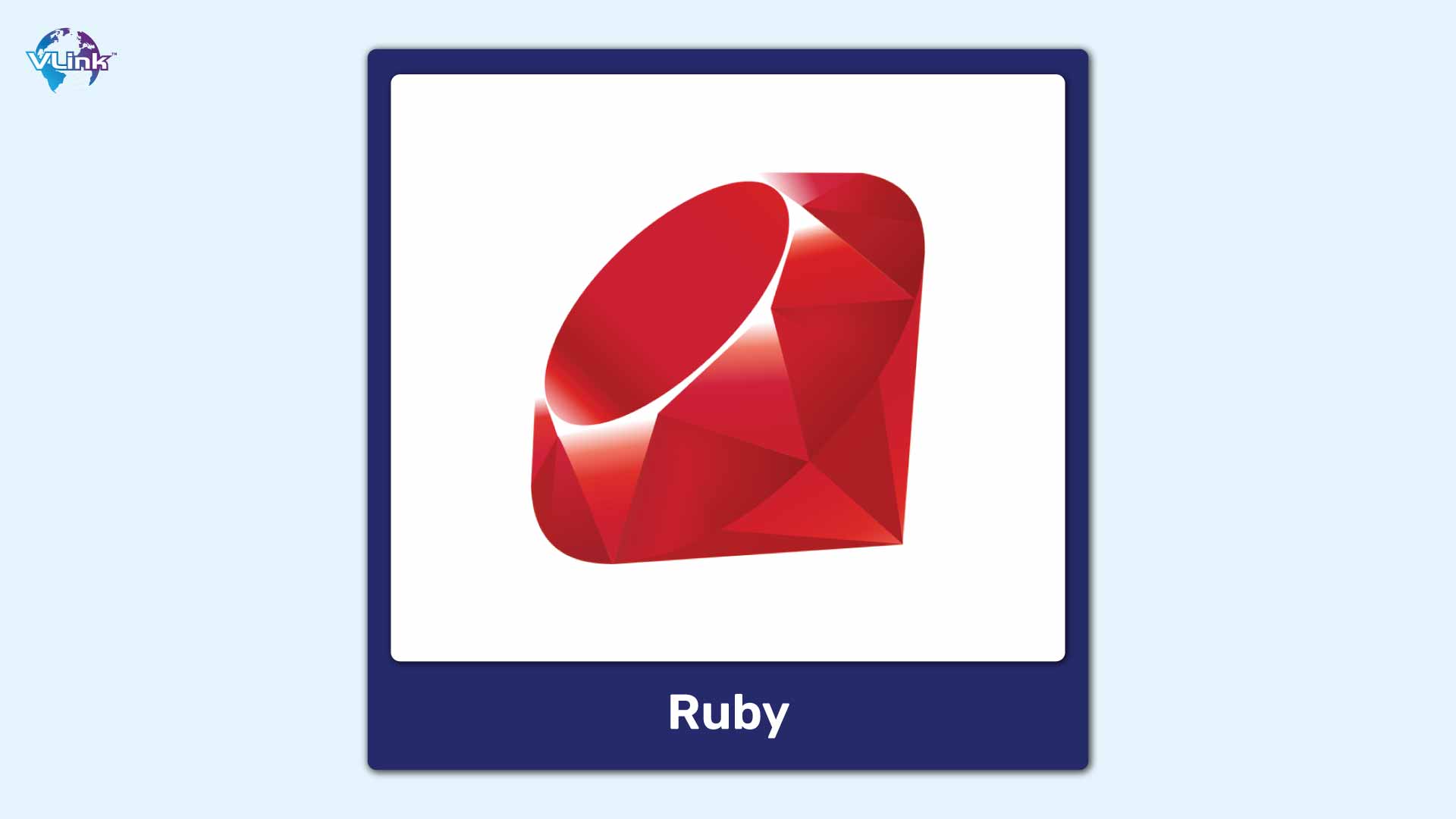
According to the PYPL popularity of programming language, Ruby is the most popular language with a 1.0% market share.
Why Should You Learn Ruby Language in 2024 & Beyond?
In 2024 and beyond, learning Ruby offers several advantages. It boasts a clean syntax, making it easy to read and write. It's highly versatile, suitable for web development, automation, and scripting. Plus, with its strong community support and extensive libraries, Ruby remains a valuable skill for developers seeking efficiency and productivity.
What is Ruby Language Used for?
- System Administration
- Software Deployment
- Data Processing
- DevOps and CI/CD Pipelines
- Server and Database Maintenance
- Network Monitoring and Troubleshooting
Benefits and Drawbacks of Ruby
Here is a table outlining the benefits and drawbacks of Ruby:
Benefits | Drawbacks |
Strong and supportive community | Slower performance |
Rapid prototyping | Dependency management |
Rich ecosystem |
|
Developer-friendly |
|
Simplicity and readability |
|
#16 - Dart
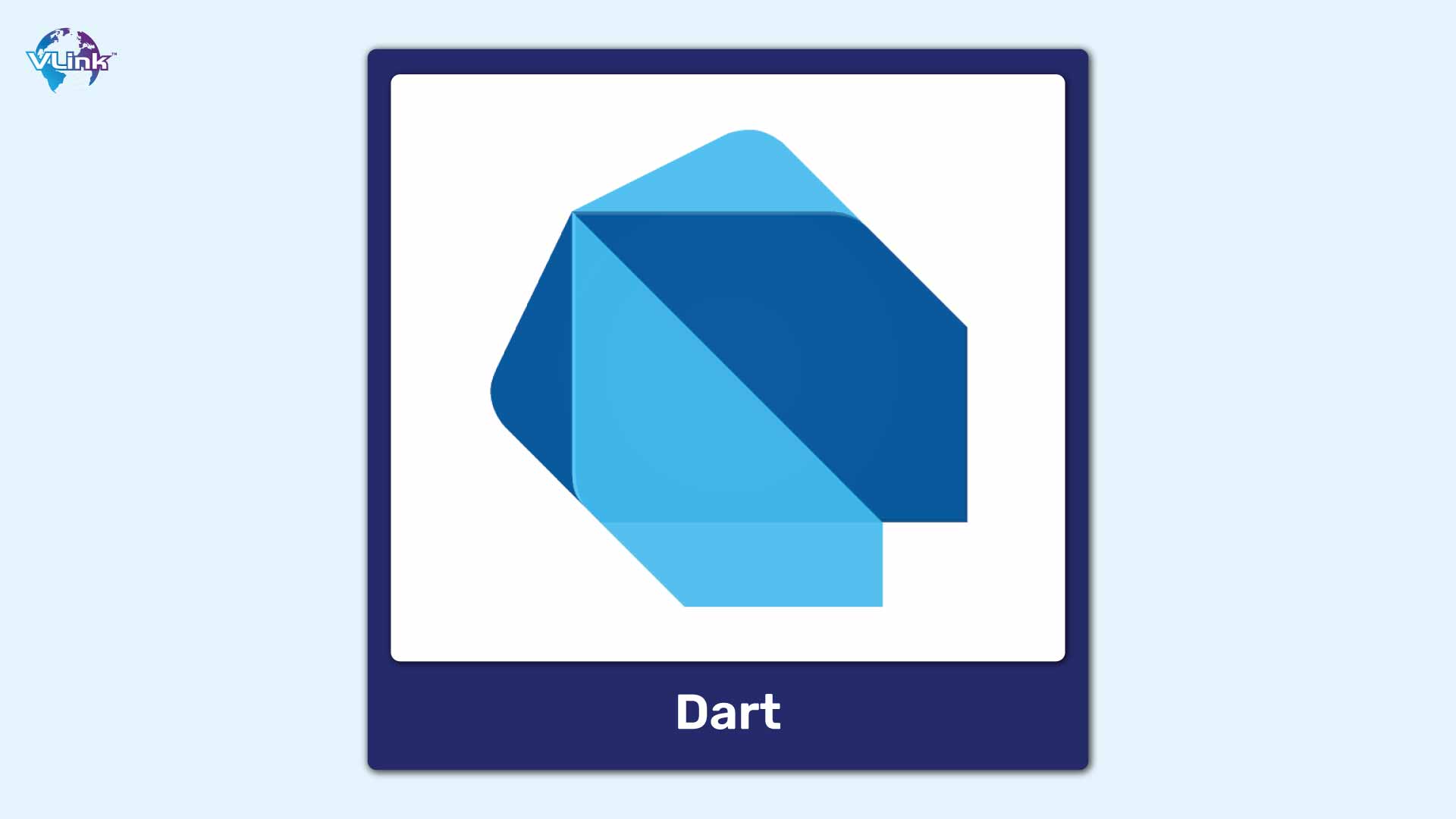
According to the PYPL popularity of programming language, Dart is the most popular language with a 1.02% market share.
Why Should You Learn Dart Language in 2024 & Beyond?
Learning Dart in 2024 and beyond is crucial for its role in cross-platform development, particularly with the rise of cross-platform development frameworks like Flutter. Dart enables developers to create high-performance apps for web, mobile, and desktop platforms, leveraging its strong typing, productivity features, and efficient compilation mechanisms.
As Flutter gains popularity in the development community, mastering Dart opens doors to exciting opportunities in building beautiful and responsive user interfaces.
What is Dart Language Used for?
- Cross-Platform Mobile App Development
- Web Application Development
- Desktop Application Development
- Server-Side Development
- IoT and Embedded Applications
- High-Fidelity UI Creation
Benefits and Drawbacks of Dart
Here is a table outlining the benefits and drawbacks of Dart:
Benefits | Drawbacks |
Cross-Platform Development | Limited ecosystem |
High performance | Smaller community support |
Strong typing |
|
Flutter framework |
|
#17 - Matlab
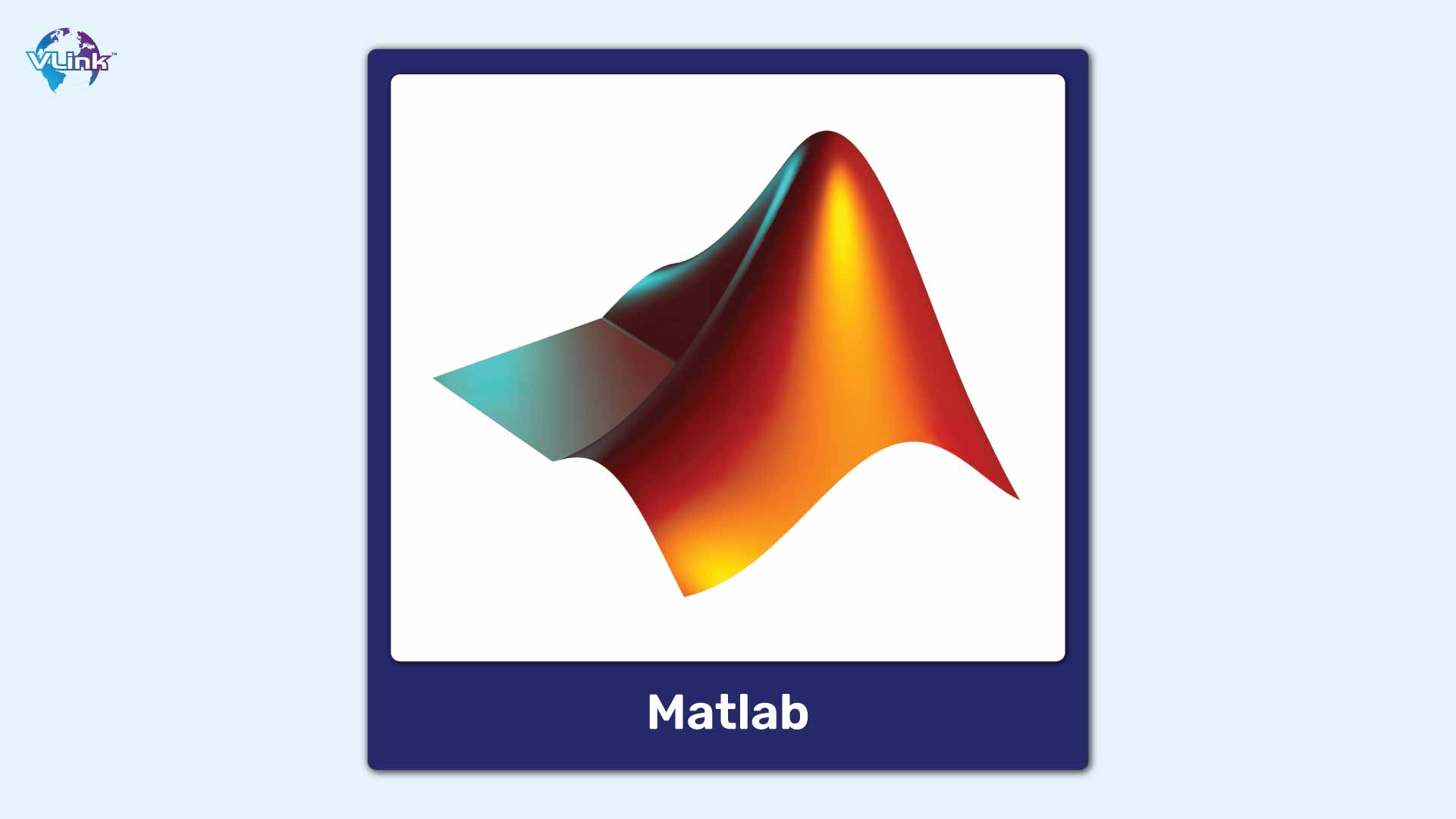
According to the PYPL popularity of programming language, Matlab is the most popular language with a 1.47% market share.
Why Should You Learn Matlab Language in 2024 & Beyond?
Learning MATLAB in 2024 remains valuable for its prowess in numerical computation, data analysis, and visualization. It's widely used in academia, research, and industries like engineering and finance. Mastering MATLAB equips individuals with essential skills for tackling complex problems and conducting advanced data analysis in various domains.
What is Matlab Language Used for?
- Numerical Analysis and Computation
- Data Visualization
- Algorithm Development
- Model-Based Design
- Signal Processing and Communications
- Quantitative Finance and Risk Management
Benefits and Drawbacks of Matlab
Here is a table outlining the benefits and drawbacks of Matlab:
Benefits | Drawbacks |
High-level language | Limited scalability |
Rich functionality | Closed source |
Interactive environment | Expensive |
Large community | Slow performance |
Integration with other tools |
|
#18 - Perl
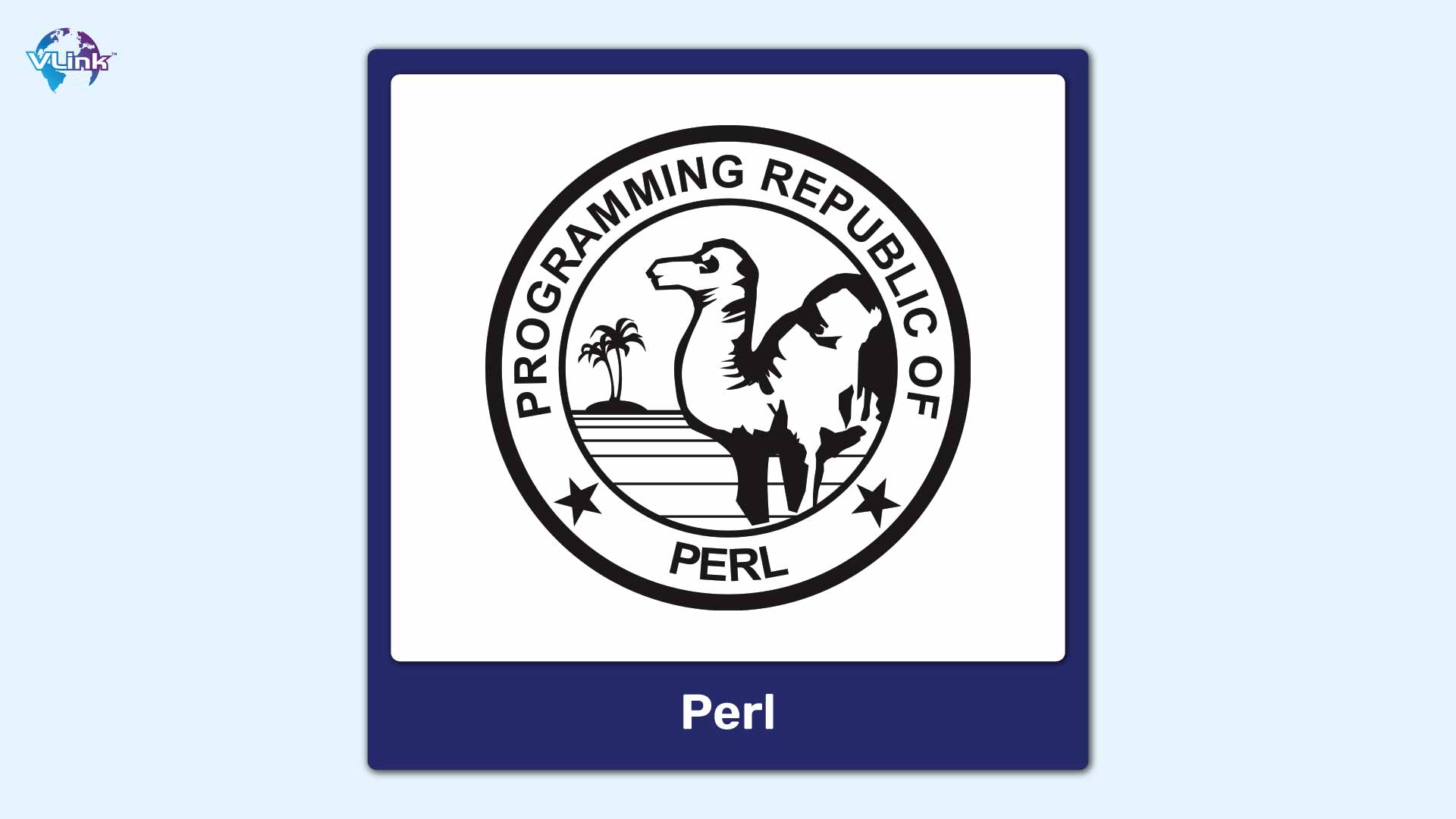
According to the PYPL popularity of programming language, Perl is the most popular language with a 0.24% market share.
Why Should You Learn Perl Language in 2024 & Beyond?
Learning Perl will be beneficial in 2024 and beyond, as it offers robust text processing capabilities, extensive libraries for system administration, and strong community support. Despite declining popularity in some areas, Perl remains relevant for legacy systems, bioinformatics, and niche applications, providing valuable skills and career opportunities.
What is Perl Language Used for?
- Text Processing and Manipulation
- System Administration
- Web Development
- Scripting and Automation
Benefits and Drawbacks of Perl
Here is a table outlining the benefits and drawbacks of Perl:
Benefits | Drawbacks |
Versatile | Complex syntax |
Regular expression support | Slow performance |
Supportive community |
|
Extensive library support |
|
#19 - Scala
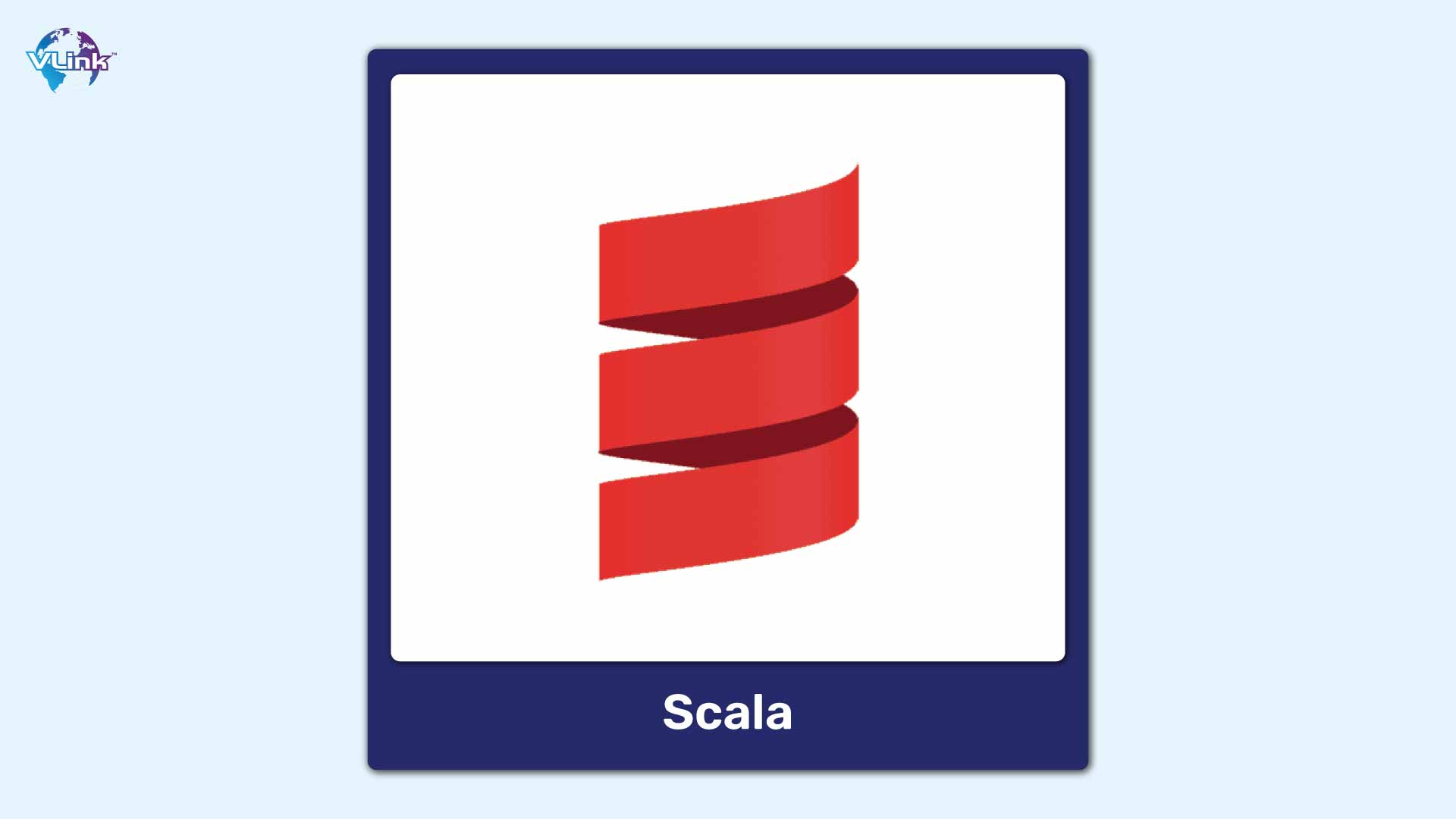
According to the PYPL popularity of programming language, Scala is the most popular language with a 0.61% market share.
Why Should You Learn Scala Language in 2024 & Beyond?
In 2024 and beyond, learning Scala offers advantages such as its integration with big data technologies like Apache Spark and its functional programming capabilities for building scalable and resilient applications.
What is Scala Language Used for?
- Web Development
- Big Data Processing
- Distributed Systems
- Domain-Specific Languages (DSLs)
- Functional Programming
Benefits and Drawbacks of Scala
Here is a table outlining the benefits and drawbacks of Scala:
Benefits | Drawbacks |
Functional and object-oriented | Tooling and IDE support |
Interoperability with Java | Smaller community size |
Highly scalable | Runtime performance |
Concurrency and parallelism | Language complexity |
#20 - LUA

According to the PYPL popularity of programming language, LUA is the most popular language with a 0.6% market share.
Why Should You Learn LUA Language in 2024 & Beyond?
One of the main reasons to learn Lua in 2024 is its lightweight nature, fast execution, and embeddability. Lua's simplicity, dynamic typing, and vibrant community provide a solid foundation for learning programming concepts and building versatile applications.
What is LUA Language Used for?
- Game Development
- Embedded Systems
- Web Development
- Desktop Applications
- Automation and Scripting
- Data Processing
Benefits and Drawbacks of LUA
Here is a table outlining the benefits and drawbacks of LUA:
Benefits | Drawbacks |
Easy to embed | Lack of comprehensive tooling |
Simple syntax | Limited performance |
Dynamic typing | Limited concurrency support |
Just-In Time compiler | Limited standard library |
What are the Top Programming Languages for Beginners in 2024 & Beyond?
In 2024 & beyond, the top programming languages for beginners are:
- Python: Known for its simplicity and versatility, Python is beginner-friendly and widely used in various domains, including web development, data science, and automation.
- JavaScript: Essential for web development, JavaScript offers interactive website features and is a good starting point for front-end development.
- HTML/CSS: Fundamental for web development, HTML (Hypertext Markup Language) and CSS (Cascading Style Sheets) are essential for creating and styling web pages.
- Swift: Developed by Apple, Swift is beginner-friendly and excellent for learning how iOS app development let your business grow at full potential.
- Golang: Known for its simplicity and performance, Go is beginner-friendly and increasingly used in cloud computing and backend development.
When it comes to hiring skilled developers with expertise in these top 20 programming languages, look no further than a dedicated IT staffing agency in the United States.
Hire the Top 3% of Developers Proficient in These Languages From VLink!
At VLink, we connect you with top-tier development talent that can take your projects to the next level. Whether you need expertise in Python, JavaScript, Java, or any other language on this list, our team of dedicated professionals is here to help. Hire our developers and ensure your next project is a resounding success.
Frequently Asked Questions
Significant types of programming languages include:
- Procedural (e.g., C, Pascal) - Focuses on sequences of instructions.
- Object-oriented (e.g., Java, Python) - Uses objects and classes.
- Functional (e.g., Haskell, Lisp) - Emphasizes functions and immutability.
- Scripting (e.g., JavaScript, PHP) - Automates tasks within more extensive programs.
- Markup (e.g., HTML, XML) - Defines data structure and presentation.
JavaScript is the most in-demand programming language for web development. It powers dynamic web content, supports frameworks like React, Angular, and Vue.js, and is essential for both front-end, back-end and full-stack development.
Widely used programming languages for mobile app development include Swift for iOS, Kotlin for Android, and Dart with the Flutter development tools for cross-platform apps.
C++ is ideal for game development due to its high performance and control over hardware. C# is also popular, especially with the Unity engine, while JavaScript and Python are used for simpler games and prototyping.














